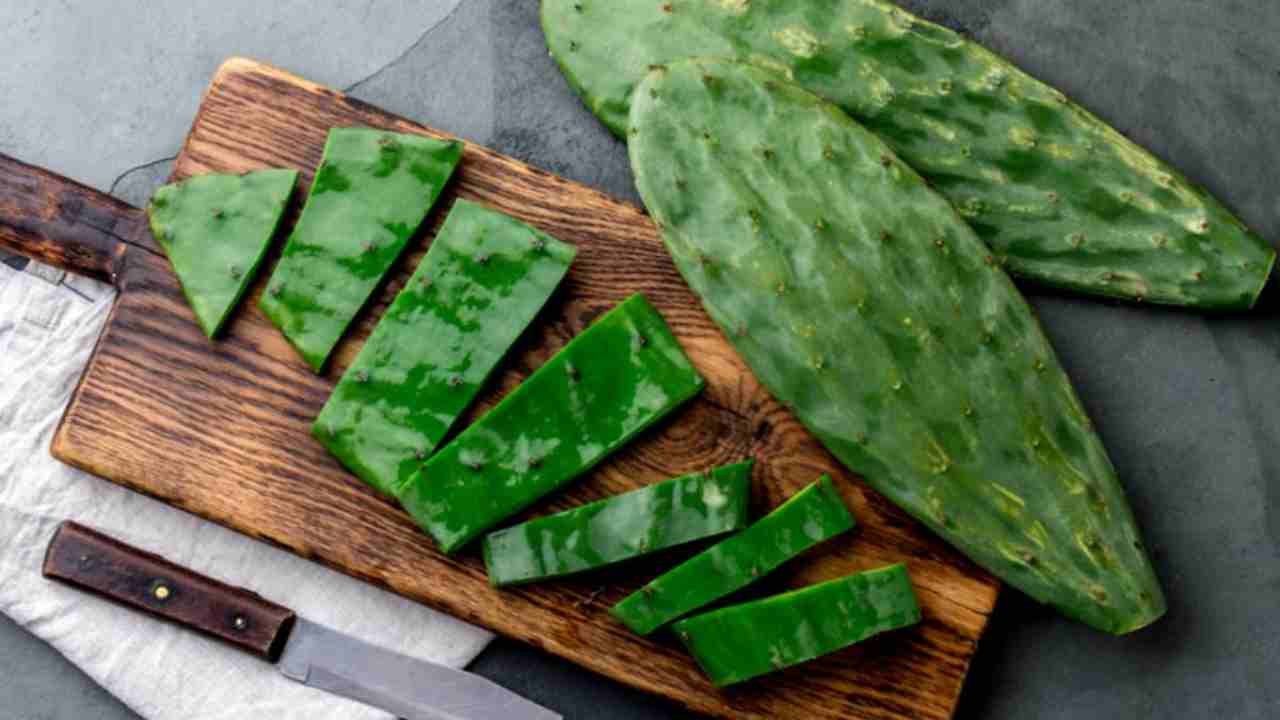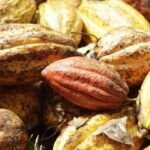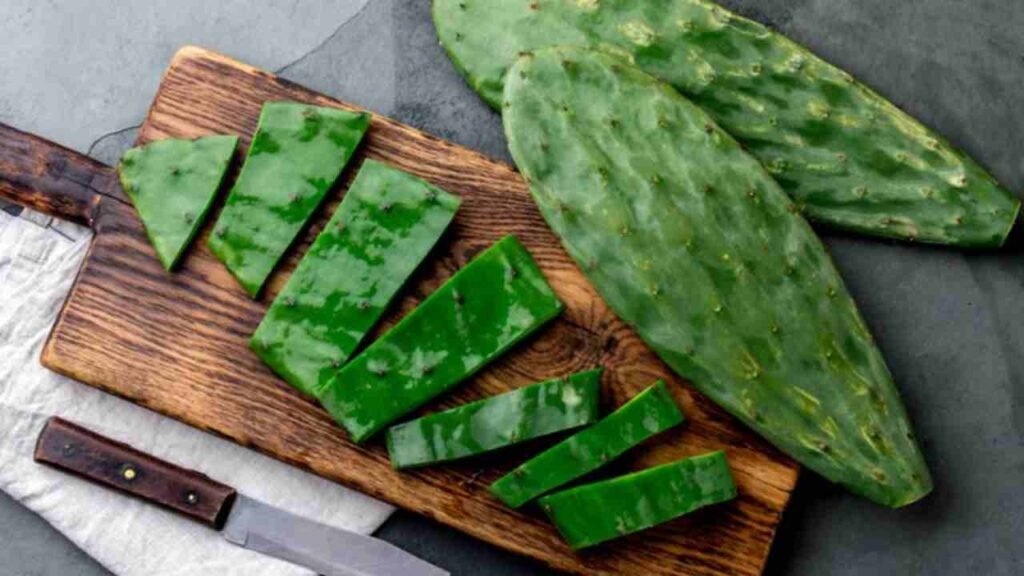Welcome to our botanical exploration! Today, we’re delving into the intriguing world of the prickly pear cactus. With its distinctive paddle-shaped pads and vibrant, jewel-toned fruits, the prickly pear is not just a common sight in arid landscapes but a fascinating plant with a rich history and a multitude of uses.

Introduction to the Prickly Pear Cactus
The prickly pear cactus, belonging to the genus Opuntia, stands as a botanical marvel within the vast tapestry of desert flora. Encompassing a diverse array of over 200 species, this genus embodies resilience and adaptability, traits that have allowed it to thrive across the arid landscapes of the Americas.
A Diverse Genus
Opuntia, as a genus, showcases an impressive diversity in form and function. From the towering giants of the Opuntia ficus-indica species, reaching heights of up to 20 feet with pads resembling large, flat pancakes, to the diminutive Opuntia microdasys, sporting diminutive pads adorned with fuzzy glochids, each species offers a unique glimpse into the evolutionary ingenuity of desert plants.
Native Range and Distribution
Native to the Americas, the natural range of prickly pear cacti spans from the southern regions of the United States, including the deserts of the southwestern states such as Arizona, New Mexico, and Texas, down through the vast expanses of Mexico, and further south into parts of South America. This distribution reflects their adaptation to a wide range of climates and habitats within the arid and semi-arid regions of the continent.
Global Adaptation
The adaptability of prickly pear cacti extends beyond their native habitats, as they have been introduced and successfully cultivated in various regions worldwide. From the Mediterranean climates of Europe to the arid landscapes of Australia and Africa, these resilient plants have found new homes and flourished in environments reminiscent of their natural habitat. Their ability to thrive in diverse climates speaks volumes about their robust nature and ability to endure challenging conditions.
Cultural and Historical Significance
Beyond their botanical significance, prickly pear cacti hold profound cultural and historical importance for indigenous peoples throughout the Americas. These plants have been integral to traditional medicine, providing remedies for ailments ranging from digestive issues to skin conditions. Additionally, they have served as a vital food source, with both the pads (nopales) and fruits (tunas) featuring prominently in indigenous cuisines.
Distinctive Features
The prickly pear cactus, with its unique morphology and striking adornments, stands as an icon of desert landscapes worldwide. Its distinctive features not only serve as adaptations for survival but also contribute to its allure and fascination among enthusiasts and botanists alike.
Modified Stems and Cladodes
At first glance, the most conspicuous feature of the prickly pear cactus is its flattened, oval-shaped pads, often referred to as cladodes or nopales. These structures, though leaf-like in appearance, are actually modified stems adapted for water storage and photosynthesis. Their flattened morphology maximizes surface area, allowing for efficient absorption of sunlight while minimizing water loss through transpiration.
Defensive Adaptations
Adorning these pads are clusters of spines or glochids, which serve as the plant’s primary defense mechanism against herbivores and environmental stressors. Spines, typically longer and sturdier, provide protection against larger predators, while glochids, tiny hair-like structures found in abundance on young pads, serve as a deterrent against smaller threats. These defensive adaptations not only deter potential predators but also help reduce water loss by creating a microclimate around the plant’s surface, thereby minimizing exposure to harsh sunlight and wind.
Striking Floral Displays
Despite their formidable exterior, prickly pear cacti surprise and delight with their vibrant floral displays. Depending on the species and environmental conditions, these cacti produce flowers in a stunning array of colors, ranging from sunny yellows and fiery oranges to rich reds and delicate pinks. These blooms, often large and showy, serve as beacons to pollinators, attracting a diverse array of insects, birds, and bats essential for reproductive success.
Ecological Significance
Beyond their aesthetic appeal, the distinctive features of prickly pear cacti play crucial ecological roles within desert ecosystems. The pads provide shelter and nesting sites for small animals and insects, while the flowers serve as vital nectar and pollen sources for pollinators. Additionally, the spines and glochids deter herbivory, helping to preserve the plant’s limited water reserves and ensure its survival in arid environments.
Cultural and Culinary Uses
Despite their prickly exterior, the pads and fruits of prickly pear cacti hold immense cultural and culinary significance in many regions. Nopales, the young pads of the cactus, are a staple ingredient in Mexican cuisine, valued for their unique flavor and nutritional benefits. Similarly, the sweet and tangy fruits, known as tunas, are enjoyed fresh or used to make jams, jellies, and beverages, adding a delightful twist to traditional recipes.
Cultural Significance
The prickly pear cactus, deeply intertwined with the cultural fabric of the Americas, holds profound significance for indigenous communities across the continent. From culinary traditions to medicinal practices and beyond, the various parts of this versatile plant have played pivotal roles in shaping cultural identity and heritage.
Culinary Traditions
In Mexican cuisine, nopales, the tender young pads of the prickly pear cactus, are revered for their culinary versatility and nutritional value. These nopales find their way into a diverse array of dishes, including salads, stews, tacos, and even omelets. Rich in vitamins, minerals, and dietary fiber, nopales not only enhance the nutritional profile of meals but also impart a distinctive flavor and texture that is both satisfying and unique.
Beyond the pads, the sweet and succulent fruits of the prickly pear, known as tunas, serve as a delightful culinary treat. Whether enjoyed fresh or incorporated into juices, jams, and desserts, tunas add a burst of flavor and color to traditional recipes, making them a cherished ingredient in many cuisines across the Americas.
Medicinal Uses
Throughout history, indigenous cultures have recognized the medicinal properties of prickly pear cacti and have utilized various parts of the plant to treat a wide range of ailments. The pads, rich in antioxidants and anti-inflammatory compounds, have been used to alleviate digestive issues, regulate blood sugar levels, and promote overall well-being.
Similarly, the fruits of the prickly pear are valued for their medicinal properties, with traditional remedies ranging from alleviating sunburn and insect bites to boosting immunity and aiding in digestion. Additionally, the flowers of the prickly pear cactus are believed to possess healing properties and have been used to make teas and infusions for centuries.
Cultural Symbolism
Beyond their practical uses, prickly pear cacti hold symbolic significance within indigenous cultures, serving as symbols of resilience, adaptability, and endurance in the face of adversity. The plant’s ability to thrive in harsh desert environments mirrors the strength and perseverance of indigenous communities, who have endured centuries of colonization and marginalization.
Furthermore, prickly pear cacti are often associated with fertility, abundance, and prosperity in many indigenous cultures, with their vibrant blooms and succulent fruits symbolizing the bountiful harvests and abundance of nature.
Ecological Role
Prickly pear cacti, with their robust presence in arid and semi-arid environments, serve as keystone species within desert ecosystems, playing critical roles in maintaining ecological balance and biodiversity. Their ecological contributions extend beyond their cultural and culinary significance, encompassing a range of functions that are vital for the health and stability of their native habitats.
Soil Stabilization and Erosion Prevention
One of the primary ecological roles of prickly pear cacti lies in their ability to stabilize soil and prevent erosion. Their deep root systems, which can extend several meters underground, anchor the soil and reduce the risk of erosion caused by wind and water. By holding the soil in place, these cacti help maintain soil fertility and prevent the loss of valuable topsoil, thereby creating a more hospitable environment for other plant species to thrive.
Habitat and Shelter
The dense, spiny growth of prickly pear cacti provides vital habitat and shelter for a diverse array of desert-dwelling creatures. Birds, such as cactus wrens and various species of finches, often nest among the protective thorns of these cacti, using them as safe havens from predators and harsh environmental conditions. Insects, including bees, butterflies, and ants, also find refuge within the intricate network of spines, utilizing the cacti as breeding sites and sources of food.
Adaptations for Survival
To survive in harsh desert environments, prickly pear cacti have evolved several remarkable adaptations. Their succulent stems store water, allowing them to endure extended periods of drought. Additionally, their spines and glochids deter herbivores and reduce water loss by providing shade and trapping moisture around the plant’s surface.
Conclusion
In conclusion, the prickly pear cactus is a remarkable plant with a myriad of fascinating characteristics and uses. From its striking appearance to its cultural significance and ecological importance, this resilient succulent serves as a symbol of adaptation and survival in some of the harshest environments on Earth. Whether admired for its beauty, enjoyed for its culinary delights, or appreciated for its role in desert ecosystems, the prickly pear cactus continues to captivate and inspire all who encounter it.
Top 20 FAQs about Exploring the Prickly Pear Cactus
- What is a prickly pear cactus?
- A prickly pear cactus is a type of cactus belonging to the Opuntia genus, characterized by its flattened, oval-shaped pads and spiny or hairy exterior.
- Where are prickly pear cacti found?
- Prickly pear cacti are native to the Americas, with a natural range extending from the southern United States through Mexico and into parts of South America.
- What are the distinctive features of prickly pear cacti?
- Prickly pear cacti are known for their flattened, oval-shaped pads, which are modified stems. These pads are adorned with clusters of spines or glochids, and the plants produce vibrant flowers in shades of yellow, orange, red, and pink.
- Are prickly pear cacti edible?
- Yes, both the pads (nopales) and fruits (tunas) of prickly pear cacti are edible and are commonly used in various cuisines, especially in Mexican cuisine.
- How do you prepare and eat prickly pear cactus pads?
- Nopales can be prepared by removing the spines and cooking them in various dishes such as salads, stews, tacos, or grilled as a side dish.
- What are the health benefits of eating prickly pear cactus?
- Prickly pear cactus pads are rich in vitamins, minerals, and dietary fiber, making them a nutritious addition to a balanced diet. They are believed to offer various health benefits, including aiding digestion and regulating blood sugar levels.
- Can you grow prickly pear cacti at home?
- Yes, prickly pear cacti can be grown at home, either in pots or in well-drained soil in suitable climates. They require minimal maintenance and are relatively easy to care for.
- Do prickly pear cacti require a lot of water?
- Prickly pear cacti are adapted to arid environments and are drought-tolerant. While they do require occasional watering, they are well-suited to dry conditions and should be watered sparingly.
- Are prickly pear cacti invasive?
- Some species of prickly pear cacti can become invasive in certain regions, particularly if they are introduced outside of their native range. However, they generally do not pose significant ecological risks in their native habitats.
- Do prickly pear cacti have any medicinal properties?
- Yes, various parts of prickly pear cacti, including the pads, fruits, and flowers, are believed to have medicinal properties and have been used in traditional medicine to treat a variety of ailments.
- Are all species of prickly pear cacti edible?
- While many species of prickly pear cacti have edible pads and fruits, not all species are suitable for consumption. It is important to properly identify the species and ensure it is safe for consumption before consuming any part of the plant.
- How do prickly pear cacti reproduce?
- Prickly pear cacti reproduce both sexually, through the production of flowers and fruits, and asexually, through the propagation of new plants from stem segments or pads.
- Are prickly pear cacti endangered?
- While some species of prickly pear cacti may be threatened by habitat loss and other environmental factors, many species are widespread and not considered endangered.
- Can you eat prickly pear cactus fruits raw?
- Yes, prickly pear cactus fruits, known as tunas, can be eaten raw. They have a sweet and tangy flavor and are often enjoyed fresh or used in various culinary applications.
- How do you harvest prickly pear cactus fruits?
- Prickly pear cactus fruits can be harvested when ripe by carefully plucking them from the plant using gloves or tongs to avoid contact with the spines.
- Do prickly pear cacti attract wildlife?
- Yes, prickly pear cacti attract a variety of wildlife, including birds, insects, and small mammals, which feed on the fruits, nectar, and pads of the plant.
- Can you make dye from prickly pear cacti?
- Yes, prickly pear cacti have been used historically to produce natural dyes, with the pads and fruits yielding various shades of red, purple, and pink.
- How long do prickly pear cacti live?
- Prickly pear cacti are long-lived plants and can survive for several decades or even centuries under favorable conditions.
- Are prickly pear cacti protected by law?
- In some regions, certain species of prickly pear cacti may be protected by law to prevent overharvesting and habitat destruction.
- What is the best time to visit areas where prickly pear cacti grow?
- The best time to visit areas where prickly pear cacti grow is typically during the spring and early summer when the plants are in bloom, displaying their vibrant flowers in full glory.
Register for My Upcoming Masterclass HERE
See You in the Live Masterclass
Sunil Chaudhary stands as a preeminent global Leading digital coach, boasting a diverse clientele hailing from over 50 nations. Renowned for his prowess as an exemplary SEO expert, business automation coach, and landing page authority, Chaudhary also holds the distinction of being esteemed as the finest business coach in India. Beyond technical domains, he imparts invaluable insights into mindset, success, and life skills, thus encompassing a holistic approach to mentorship.
Join FREE Courses HERE
Know The Author:
 Sunil Chaudhary aka Suniltams Guruji is India’s Leading Digital Coach. He provides complete Digital Skill Development Coaching with great support. Sunil has trained more than 25000 students and helped more than 1100 businesses so far. Sunil is a well-known face across the world for Digital Coaching.
Sunil Chaudhary aka Suniltams Guruji is India’s Leading Digital Coach. He provides complete Digital Skill Development Coaching with great support. Sunil has trained more than 25000 students and helped more than 1100 businesses so far. Sunil is a well-known face across the world for Digital Coaching.
Digital Success Coach | Best SEO Coach India | Mindset Coach | Life Success Coach
Related posts:
 Unveiling the Health Wonders of Theobroma Cacao: Beyond the Temptation of Chocolate
Unveiling the Health Wonders of Theobroma Cacao: Beyond the Temptation of Chocolate
 Frothy Delights: Exploring Milk Steamers for the Perfect Cup
Frothy Delights: Exploring Milk Steamers for the Perfect Cup
 Glow Up this Spring: Revitalize Your Skin with a Hydration-Centric Skincare Routine
Glow Up this Spring: Revitalize Your Skin with a Hydration-Centric Skincare Routine
 From Flushing Kidney Stones to Boosting Creativity: 5 Surprising Health Benefits of Beer
From Flushing Kidney Stones to Boosting Creativity: 5 Surprising Health Benefits of Beer
 Superfood Coconut: Know These 5 Benefits of this Edible Fruit
Superfood Coconut: Know These 5 Benefits of this Edible Fruit
 Navigating Rheumatoid Arthritis and Preeclampsia During Pregnancy
Navigating Rheumatoid Arthritis and Preeclampsia During Pregnancy
 “Summer Gut Health: Essential Tips for a Happy Gut”
“Summer Gut Health: Essential Tips for a Happy Gut”
 The Ayurvedic Way to a Healthy Summer Digestion: 7 Tips
The Ayurvedic Way to a Healthy Summer Digestion: 7 Tips
 The Secrets of Lip Balm: Your Ultimate Guide to Soft, Supple Lips
The Secrets of Lip Balm: Your Ultimate Guide to Soft, Supple Lips










